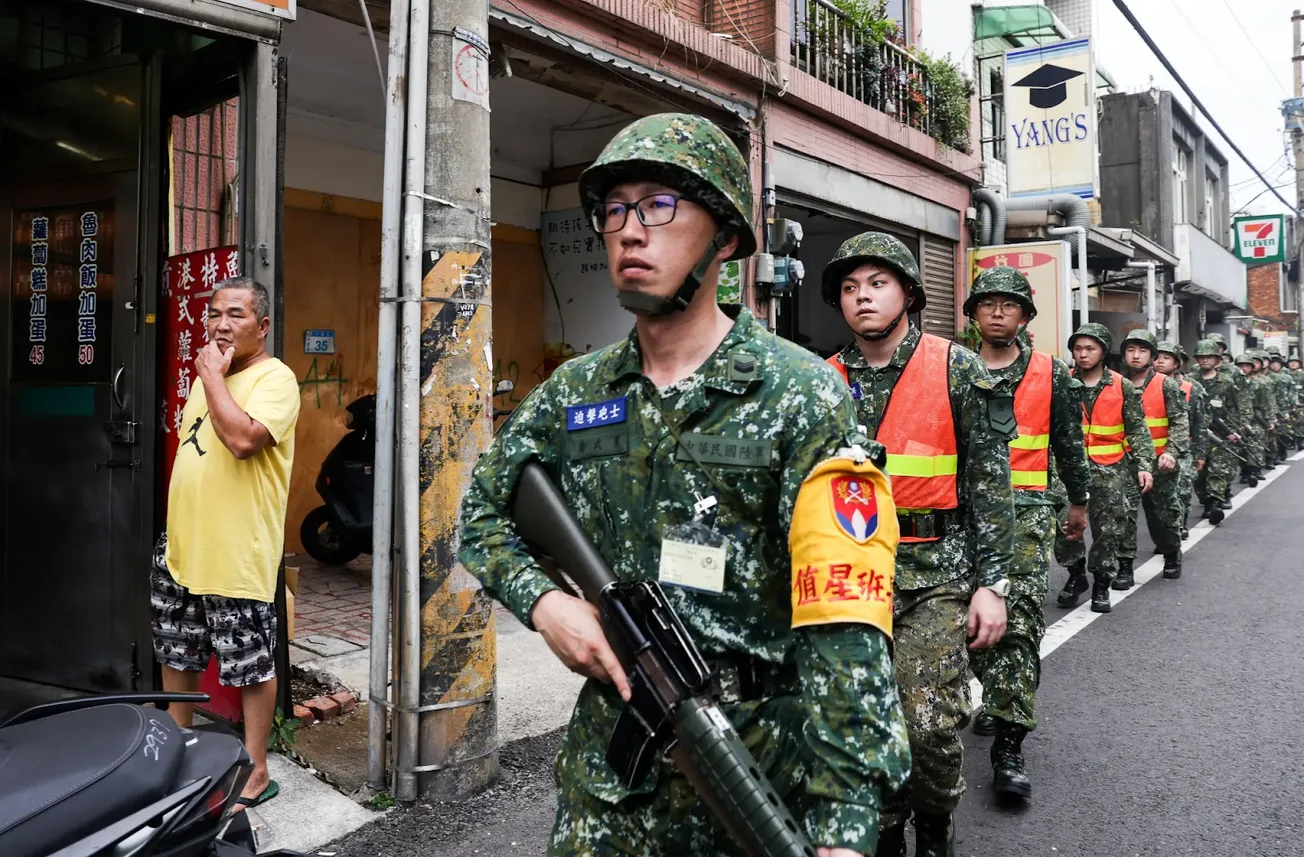Table of Contents
On the morning of February 24, 2022, Russia declared war on Ukraine. A complex and multi-faceted operation, Russia launched a series of simultaneous attacks along various different axes with the intention of rapidly capitulating the Ukrainians. Labeled a “special military operation,” Putin expected the Ukrainian government to topple within days and flee the country. He expected the Ukrainian people to greet Russian soldiers as liberators. He expected Kyiv to host a triumphant Russian military in a grandiose military parade. In short, he expected a quick victory.
Three years later, almost a million Russian soldiers are dead or wounded. Russia has become a pariah on the world stage and has been reduced to a declining kleptocratic petrostate racked by alcoholism. Russia’s military has been hollowed out. Its officer and non-commissioned officer corps have been decimated, with over 5,400 officers killed including at least 9 generals. Its military uses rusty Cold War era equipment. Its ranks are filled with conscripts, convicts, and contract soldiers.
Western nations had expected Ukraine to collapse. Yet the Ukrainians fought back heroically. To this day, Ukraine, though much smaller and weaker, has not only managed to retain most of their territory but has also been able to even occupy parts of Russian territory.
Ukraine’s heroic resistance against a much larger power has drawn natural comparisons to another potential conflict across the world: Taiwan. Xi Jinping has made it clear that he wants the PLA to be ready to take over Taiwan by 2030, declaring unification an inevitability of history. Much like Ukraine, Taiwan is a small state facing a giant, belligerent neighbor, but in stark contrast to Ukraine, Taiwan is unlikely to resist tenaciously like the Ukrainians.
In regards to a hypothetical invasion of Taiwan by China, a oft cited war-game among American foreign policy optimists is CSIS’s 2023 war game that predicts a costly American-Taiwanese victory against China. While the mainstream media reported only this aspect of the paper to the cheers of impetuous hawks, one key assumption that the paper makes is that Taiwan resists against China vigorously. This assumption rests on false premises. Upon closer examination, Taiwan’s military readiness and morale stand on weak foundations.
Taiwan’s military is dilapidated. Its government implements shoddy conscription where soldiers frequently report that they never actually train with weapons. Despite public surveys indicating most Taiwanese would defend the island if China attacked (and these polls are questionable in their own regard), surveys about conscription which more accurately reflect actual willingness to fight are highly mixed with many reporting that conscription is a pointless career impediment. Unprofessionalism and defeatism rack a force that engages in scripted training, a practice that provides no real value for real combat planning.
Taiwan sees dramatic understaffing for some combat units reaching up to 80%. Morale throughout the military remains strikingly low, in contrast to the false confidence Western foreign policy planners place on Taiwan. Its reserve system is broken and inefficient, raising serious questions about its capability to be mustered in times of war.
Military procurement in Taiwan is a whole other problem. Soldiers frequently have shortages of critically needed parts and weaponry. What money the government does have to spend on procurement they do so on flashy items like fighter jets, tanks, and attack helicopters, all of which would be easy targets for China in the first few hours of an invasion. To make matters worse, Taiwan is a small island with only a handful of bases to keep these assets, meaning China can concentrate maximum effort to overwhelm their spotty defenses.
Even purchases of these “wunderwaffe” end up in massive backlogs as equipment takes years to eventually trickle down to the Taiwanese military. Domestic weapons procurement has also been dedicated to pointless projects like indigenously made submarines which would be mostly useless in a Chinese invasion: China can easily locate these submarines and the PLA navy is much larger than Taiwan’s miniscule force. The result is an army equipped with Cold War equipment with no spare parts to sustain extended operations.
Furthermore, China is actively attempting to undermine Taiwanese military readiness, societal cohesion, and morale. Reports of Chinese espionage and infiltration are commonplace throughout Taiwan’s military and civil society. From average soldiers to high ranking Generals, China has been exploiting gambling debts and pension grievances to turn average Taiwanese soldiers into double agents for an invasion. Politicians, organized crime, and even social media influencers are targeted by China with the goal of using them to weaken Taiwanese resolve.
It’s also worth noting that in the most recent 2024 Taiwanese Presidential elections, a majority of voters voted for either the KMT or TPP, which advocate dialogue with China and friendlier relations. These elections show that large parts of Taiwanese society still don’t view China as an existential threat to Taiwanese independence and don’t take the threat of invasion seriously.
This reality is not well understood by American foreign policy planners. Plans for American intervention have been fundamentally built on the assumption that the Taiwanese are willing to fight for themselves, but this is a dangerous assumption. The illusion of Taiwanese strength permeates throughout American foreign policy circles, influencing strategic decision-making on a massive scale. In its delusion, America invents new high tech weaponry, reinforces units to the region, and develops training regimens fit for combat in the Pacific and Taiwan. Planners anticipate direct combat with the PLA on land, in the air, and on the seas because they view any conflict as one where the U.S. steps in to save Taiwan’s plucky resistance.
Yet all of this is done in vain if the Taiwanese collapse within the first few hours or days of an invasion. No U.S. foreign policy thinker has even explored the possibility of China taking over Taiwan the same way Russia took over Crimea in 2014, leaving the U.S. and our allies completely flatfooted. Dramatically more attention needs to be dedicated toward Taiwan’s strength to stand on its own rather than fancy new gadgets developed by American defense tech companies. And if the U.S. fails to do so, the consequences would be dire.
Imagine that the year is 2028. PLA troops have been amassing in Fujian Province, opposite of Taiwan across the Taiwan Strait. The world is expecting an imminent invasion of Taiwan. The island nation is completely cut off from world trade and its public and private institutions are bombarded with cyberattacks and sabotage. Misinformation sweeps the internet both in Taiwan and internationally. Taiwan conducts a chaotic mass mobilization as novice reservists are called up to serve in dramatically under equipped units. The U.S. moves thousands of troops and planes into regional U.S. bases, reinforces air-defense systems, and directs carrier groups to move toward the Western Pacific. The stage is set for a bloody conflict.
Yet, those American troops will never even set foot on Taiwan. They will never fire their rifles. In a coordinated strike, Chinese special forces land throughout Taiwan. Phone lines, telecommunication networks, and energy supplies are sabotaged. The entire nation descends into darkness. They assassinate prominent politicians, raid military bases, and cripple Taiwan’s infrastructure network. Missile strikes across the island target Taiwanese naval, air, and army bases. Billions of dollars worth of flashy weaponry the Taiwanese government has bought–tanks, attack helicopters, and warships–are reduced to piles of twisted steel in hours. China activates its “fifth column” in Taiwan as local politicians, military officers, and criminal organizations sow chaos and confusion throughout the country. Some entire units stop answering to Taiwanese high command. Some politicians declare themselves to be in charge of the government and promise peace talks with China. Average conscripts succumb to the belief that “it's better to be red than dead” and lay down their arms.
Day breaks. A Chinese flag flies over Taipei 101. Chinese ships full of PLA soldiers land in Taiwanese ports, completely unopposed. Tanks roll throughout the streets of Taiwan. Small bands of fanatical resistance exist, but they are doomed to fail. Within months, China stamps them out. And Americans wake up to a new world, having had completely zero time to react.
If Taiwan continues to neglect the dismal state of its defense and America fails to recognize Taiwan’s fatal defensive flaws, this hypothetical could very well become reality. And if Taiwan is either unwilling or unable to fix these problems in a meaningful way, American planners need to not only reconsider our tactical plans, but also whether or not it is even worthwhile to attempt to defend Taiwan.
America has time and time again seen the catastrophic consequences of sending our troops to die in foreign wars fighting for countries and peoples that aren’t even willing to fight for themselves. We’ve seen this in South Vietnam where a corrupt bureaucracy and incompetent military completely collapsed under the pressure of North Vietnam. We’ve seen this in Afghanistan where Afghan National Army soldiers disintegrated against a renewed Taliban offensive.
Tens of thousands of caskets. Tens of thousands of folded American flags. Tens of thousands of grieving families. And for what? If Taiwan isn’t willing to fight for themselves, then Americans should not be the ones shedding blood for a lost cause.
Geographically, Taiwan would be a nightmare to invade. But there is no strategic value to the shallow beach waters, treacherous mountain passes, and deep rainforest jungles if there are no soldiers there to defend them. Taiwan will not rally around the flag if there is no flag to rally around.





